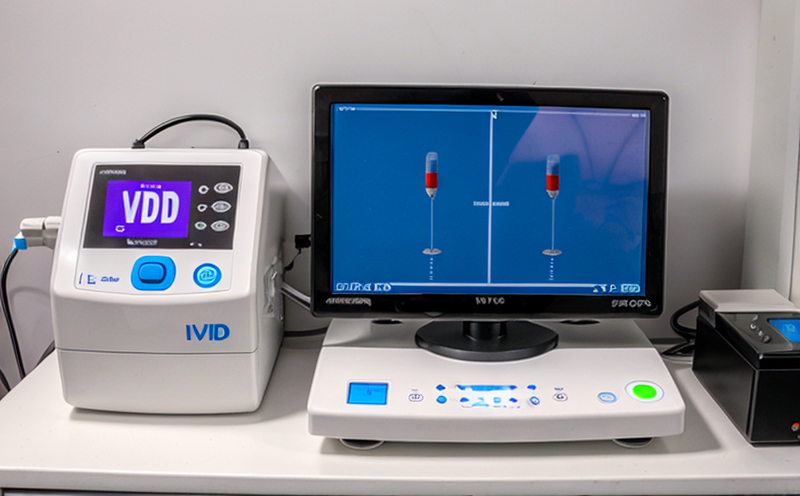CLSI EP10 Preliminary Evaluation of IVD Method Performance
The CLSI EP10 guide provides a structured approach to evaluating the performance characteristics of in vitro diagnostic (IVD) methods before they enter clinical use. This preliminary evaluation is crucial for ensuring that new or modified IVD tests meet regulatory requirements and provide accurate, reliable results.
EP10 focuses on several key areas: precision, accuracy, linearity, and analytical sensitivity. Precision assesses the consistency of test results over time, while accuracy evaluates how closely measured values align with true values. Linearity ensures that the IVD method can accurately measure a wide range of analyte concentrations. Analytical sensitivity is critical for detecting low-concentration analytes.
This evaluation is particularly important in sectors where accurate and timely diagnostic results are essential, such as oncology, infectious disease management, and molecular diagnostics. In these contexts, even small discrepancies can lead to misdiagnosis or inappropriate treatment.
The CLSI EP10 process involves several steps:
- Sample preparation according to manufacturer’s instructions
- Solution of reference materials and quality control samples
- Dilution series preparation
- Instrumentation setup as per the CLSI guidelines
- Data collection and analysis using predefined metrics
The EP10 process ensures that the IVD method is robust, reliable, and capable of producing consistent results across different laboratories. This preliminary evaluation helps identify any potential issues early in the development or validation process.
By adhering to CLSI EP10 standards, manufacturers can demonstrate compliance with international regulatory requirements such as those set by the International Organization for Standardization (ISO) and the Food and Drug Administration (FDA). This ensures that IVD products are safe, effective, and reliable when used in clinical settings.
Applied Standards
The CLSI EP10 guide is widely recognized as a best practice for evaluating the performance of IVD methods. It aligns closely with ISO standards such as ISO 15189 and ISO 13428, which focus on quality management systems in medical laboratories and biological safety in microbiological laboratories, respectively.
EP10 is also consistent with FDA regulations for the premarket approval of IVD devices. By following CLSI EP10 guidelines, manufacturers can ensure that their products meet regulatory requirements and are suitable for use in clinical settings.
The guide provides detailed instructions on how to conduct a preliminary evaluation, including sample preparation, instrumentation setup, data collection, and analysis. It emphasizes the importance of using appropriate reference materials and quality control samples throughout the process.
Manufacturers who adhere to CLSI EP10 standards can also leverage this compliance as part of their quality management systems. This ensures that every step in the development and validation of IVD methods is documented, reviewed, and improved upon continuously.
Benefits
- Increased confidence in product performance: By following CLSI EP10 guidelines, manufacturers can demonstrate that their IVD methods meet strict quality standards. This enhances trust among healthcare providers and patients.
- Reduced development time: Identifying potential issues early in the process allows for quicker resolution, reducing overall development time and costs.
- Enhanced regulatory compliance: Adhering to CLSI EP10 ensures that IVD methods meet both national and international standards, simplifying the approval process.
- Prompter market entry: Products that have undergone a thorough preliminary evaluation can be introduced to the market sooner, gaining an early competitive advantage.
Competitive Advantage and Market Impact
Adhering to CLSI EP10 standards provides significant advantages in today’s highly competitive medical device industry. By ensuring the highest quality of IVD methods, manufacturers can differentiate themselves from competitors who may not follow such rigorous evaluation processes.
Healthcare providers and laboratories that use compliant IVD methods are more likely to trust the accuracy and reliability of test results. This leads to greater patient confidence and satisfaction, which in turn fosters stronger relationships between healthcare providers and their patients.
The CLSI EP10 process also helps manufacturers anticipate potential issues before they become significant problems. By identifying and addressing these issues early on, companies can maintain a high level of product quality throughout the lifecycle of the IVD method.
Compliance with international standards like those provided by CLSI and ISO not only enhances market entry but also supports long-term success in the industry. As regulations evolve, following established guidelines ensures that products remain compliant and meet changing requirements over time.





